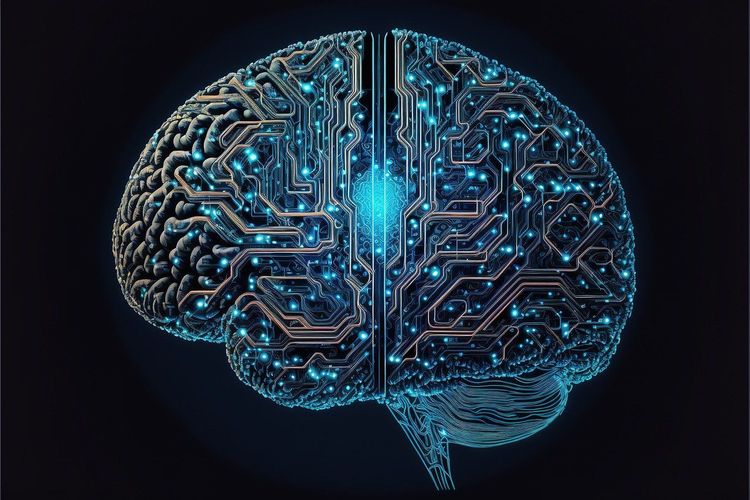The Future Directions of Generative AI: Insights and Challenges
The advancement of generative AI is rapidly progressing, particularly with the improvements in GPT-4. Unlike its predecessor, GPT-3.5, GPT-4 significantly enhances performance in intricate professional domains and exhibits superior logical reasoning. For example, GPT-4 performs in the top 10% on the U.S. bar exam, while GPT-3.5 ranks in the bottom 10%. This leap in capability allows ChatGPT to explore diverse applications more effectively. OpenAI has identified several promising use cases, such as integrating AI into Duolingo for interactive language practice and Morgan Stanley utilizing GPT-4 to streamline employee access to its knowledge base.
However, skepticism remains regarding the current capabilities of GPT technologies. Stuart Russell, in a recent speech, highlighted that models like ChatGPT and GPT-4 do not possess true comprehension of the world and are not genuinely "answering" questions. He portrayed today's language models as fragments of a larger puzzle, leaving much uncertainty about their limitations and the future of general artificial intelligence.
Yann LeCun, a Turing Award winner and chief AI scientist at Meta, echoed these concerns. He noted that the autoregressive nature of current GPT models limits their reasoning capabilities due to the absence of planning. Since these models generate outcomes based solely on probabilities, they struggle with issues like hallucinations and inaccuracies. As input text size increases, the risk of errors amplifies significantly. These critiques underscore the need for enhancements in AI reasoning abilities through comprehensive data augmentation and methodological iterations.
Despite these challenges, many generative AI companies are cautious about pursuing advanced capabilities such as storytelling and emotional intelligence, which reflect human creativity. Such developments might lead to a decrease in human oversight and could result in increased regulatory scrutiny from governments, potentially stifling prior investments in generative AI.
Looking forward, LeCun suggests creating a "world model." This model would not only replicate human neural functions but also incorporate cognitive modules that emulate the brain's structural organization. In contrast to traditional language models, a world model would have planning and predictive capabilities, facilitating a deeper understanding of the world and strategic foresight. Furthermore, integrating a cost accounting module could help mitigate risks and improve reliability.
Though LeCun offered valuable insights, he provided limited specifics on implementing these ideas. Other experts participating in the discussion similarly refrained from sharing concrete opinions on the future of generative AI, which may perpetuate a fragmented trajectory in the sector with the goal of a unified global generative AI model remaining largely theoretical.
Predictions for Generative AI in China
In a recent interview, Professor Huang Tiejun from the Zhiyuan Research Institute emphasized that while the generative AI market in China is booming, it faces challenges due to excessive enthusiasm and insufficient training data. Although powerful new models are emerging, their capabilities still trail behind international standards due to comparatively smaller datasets. For instance, Alibaba's "Tongyi Qianwen" model was trained on approximately 200 billion tokens from diverse Chinese dialogues, while ChatGPT utilized around 45 billion tokens.
Huang noted that the current landscape is marked by repeated efforts that complicate resource allocation and hinder sector growth. He predicts that only about three major generative AI models may persist as the market matures.
Additionally, Huang pointed to a shift in market focus, with Tencent’s Ma Huateng indicating that the end-user market is expected to shrink in the coming decade, paving the way for business-to-business (B2B) opportunities. Alibaba's research institute aligns with this notion, forecasting that the next decade will be pivotal for traditional businesses undergoing transformation.
For generative AI to effectively penetrate the B2B market, it must deliver concrete value by reducing costs and increasing efficiency. This necessity is pressing, especially as many industries remain hesitant to adopt these models. Traditional manufacturing, for example, is experiencing declining orders and extended payment cycles, creating reluctance among small and medium-sized enterprises to explore larger models due to high trial-and-error costs.
Historically, the evolution of the SaaS industry in China from 2004 to 2015 demonstrates that emerging markets often experience growth surges following initial stagnation. Following the digital transformation accelerated by the pandemic, the SaaS market is positioned for critical growth but remains incomplete and immature.
In conclusion, entering the B2B market for generative AI will not happen overnight; it requires a gradual process, substantial investment in algorithms, computing power, and innovative functionalities. The financial challenges associated with the lengthy commercialization process may lead to resource consolidation toward leading AI firms, reminiscent of trends in ride-sharing and delivery sectors, where only a few players typically thrive amid intense competition.







